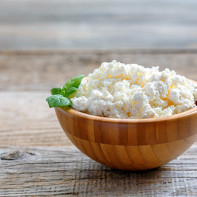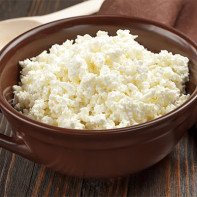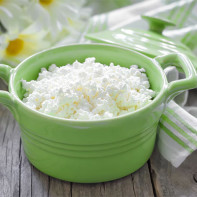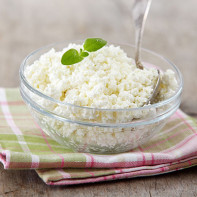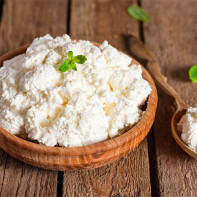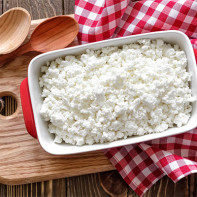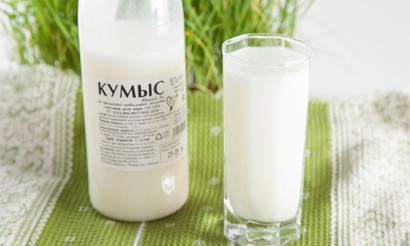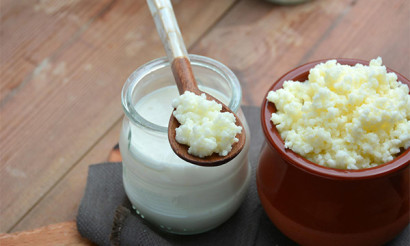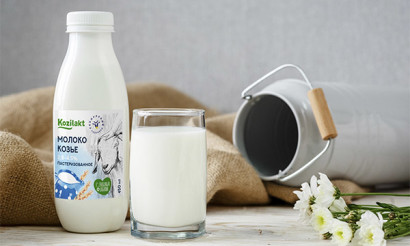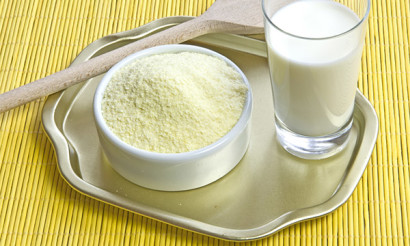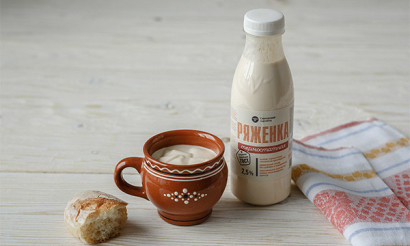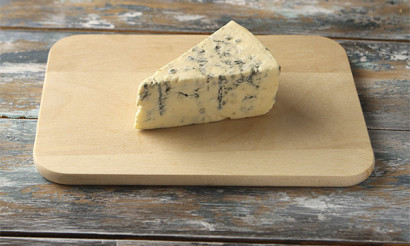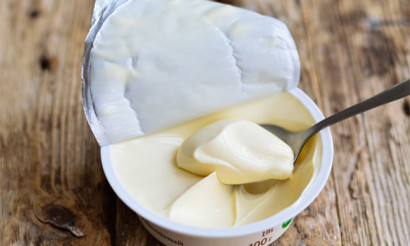Curd: benefits and harm to the health of the body
Cottage cheese is one of the most popular fermented milk products using animal components. It is recommended for use regardless of the age and gender of the person. It is very beneficial for every organism. Cottage cheese has a unique composition and many varieties, which allows you to enter it on the menu for various diets. Sour-milk product can be purchased at the store or prepared at home on their own.
- Types of cottage cheese
- What is the difference between cottage cheese and curd mass
- Composition and calorie content
- What is useful cottage cheese
- For women
- For men
- During pregnancy
- When breastfeeding
- For children
- The benefits of goat curd
- Is cottage cheese made from milk powder
- Fat-free cottage cheese: benefits and harms
- Is there any benefit from the curd mass
- Is it possible to eat curd while losing weight
- Cottage cheese in medicine
- With diabetes
- With pancreatitis
- With gastritis
- For the intestines
- For constipation
- With gout
- With colitis
- For the liver
- With hemorrhoids
- With cholecystitis
- Recipes of traditional medicine based on cottage cheese
- Cottage cheese in cosmetology
- For face
- For hair
- Harm and contraindications
- How to choose and store cottage cheese
- Is it possible to freeze
- How to check cottage cheese for naturalness
- How to make cottage cheese at home
- From milk
- From kefir
- How to make goat curd
- Why cottage cheese is bitter
- Why cottage cheese turns rubber
- Why cottage cheese turns liquid
- What can be cooked from cottage cheese: recipes
- Syrniki
- Cottage cheese casserole
- How to eat cottage cheese
- How much can you eat per day
- Is it possible to eat cottage cheese every day
- Is it possible to eat cottage cheese with sour cream
- Is it possible to eat expired cottage cheese
- Is it possible to eat cottage cheese after training
- Can I eat at night and on an empty stomach
- Is it possible to eat cottage cheese in the post
- Is it possible to give animals cottage cheese
- Interesting facts about cottage cheese
Types of cottage cheese
By consumer qualities:

- Classic cottage cheese with a fat content of 4-18%.
- Low-fat - 1.8% fat.
- Fatty - a product more often than home-made, has a fat content of 19-23%.
- Fat-free cottage cheese, its fat content is less than 0.1%.
- Product with various additives in the form of raisins, nuts, dried fruits, etc.
Also, cottage cheese can be divided by consistency into two types. Grain refers to the first type - this is characteristic of home products. And the second type is pasty, such cottage cheese has an oily structure and is represented by a homogeneous mixture.
What is the difference between cottage cheese and curd mass
Both products are fermented milk products that can be consumed raw or used to prepare various dishes. Their base is cottage cheese. It is a pure sour-milk product obtained by the interaction of milk with sourdough. Cottage cheese is characterized by the addition of cream, condensed milk, butter, and various dried fruits.
According to the consistency, the cottage cheese has a granular structure, a paste-like form is characteristic of the curd mass, which allows it to be used for spreading on bread. Cottage cheese is not always consumed in its pure form, it is usually used for baking, as for the curd mass, this is a finished product that can be served as a dessert.
The calorie content of the curd is higher. This is because its composition includes cream, condensed milk, sour cream. If it also contains dried fruits, vanilla sugar - this makes the mass more calories.
Composition and calorie content
As a part of cottage cheese, a large number of vitamins and minerals were found. Among them - vitamin A, PP, C, E, vitamins of group B. Of the minerals, cottage cheese is rich in sodium, calcium, potassium, phosphorus, iron, zinc, selenium, magnesium. In addition, cottage cheese is characterized by the content of a number of interchangeable and essential amino acids.
The calorie content of the fermented milk product depends on the percentage of fat content.Fat-free products have a calorie content of 70 kcal per 100 g, non-fat and bold varieties are characterized by calorie content of 86 and 156 kcal per 100 g, respectively. The calorie content of fatty cottage cheese is 225–250 kcal per 100 g.
What is useful cottage cheese
Such a dairy product, like cottage cheese, is made by heating sour milk. It is a natural product and brings great benefits to the human body. The main value of the product is that it contains proteins that are easily absorbed. It can also replace meat with vegetarians.
By improving fat metabolism, cottage cheese is used in diets for the treatment of hypertension and liver. Useful product for weight loss, is involved in the formation of hemoglobin in the blood.
For women
Cottage cheese is very useful for the female body. Due to the content of tryptophan and methionine, the emotional state is normalized, the mood improves, which is very important during hormonal changes in the body of a woman. This applies to PMS, menstruation, menopause. Low-fat cottage cheese contains a lot of calcium, vitamin PP and phosphorus. These components allow you to strengthen teeth and bones, improve the condition of blood vessels, restore intestinal microflora.
For men
Men of all ages are advised to consume cottage cheese. For the male body, the product is useful in high calcium and protein. Protein can accelerate muscle growth. Mineral substances in the composition of the fermented milk product contribute to the normalization of the central nervous system, the cardiovascular system. Cottage cheese prevents the development of atherosclerosis, protects against stress, depression, improves memory and mental abilities. Due to the calcium content, bones and teeth are strengthened. It is recommended to use it for fractures.
Sports activities among men are often accompanied by sprains and torn ligaments. Natural cottage cheese made at home contributes to a quick recovery.
During pregnancy
The diet of a pregnant woman must necessarily include dairy and sour-milk products. Casein contained in cottage cheese can be a substitute for animal protein. It has a high nutritional value and is easily absorbed by the body. Calcium as part of cottage cheese is involved in the proper formation and development of fetal bone tissue. If the baby does not receive a sufficient amount of such a vitamin with food, he will take the missing amount from the mother’s body. This leads to a deterioration in the condition of the hair, teeth, and also the nails of the woman. The use of cottage cheese in sufficient quantities protects against such problems.
Phosphorus, available in the fermented milk product, takes part in the formation of muscle tissue. Vitamins of group B have a beneficial effect on the nervous system of a pregnant woman, folic acid protects the fetus from the occurrence of defects. Bifidobacteria in the composition of the product ensure the normal functioning of the digestive tract, which helps to reduce toxicosis. The iron content increases the level of hemoglobin.
When breastfeeding
Animal protein in the composition of cottage cheese is easily absorbed and improves metabolic processes in the body of a nursing woman. This allows for a short time to recover from childbirth. Also, cottage cheese increases the amount of breast milk. When breastfeeding, the use of this fermented milk product helps to compensate for the lack of calcium in the body of a young mother.
For the normal functioning of all systems and organs, it is sufficient for a nursing woman to consume 100-200 g of cottage cheese per day.
For children
Due to its beneficial properties, cottage cheese should be an indispensable product in the diet of children. Calcium, which is contained in this milk product, is the basis of the skeletal system of a growing child. Deficiency of this substance leads to osteoporosis, diseases of the spine. The protein and fat found in cottage cheese are necessary for the normal growth and development of the child's body.
The antibacterial components in the composition of the product restore the intestinal microflora, and due to low acidity they do not irritate the gastric mucosa. It is worth noting that cottage cheese is absorbed by the child’s body much easier than kefir. Vitamin B2 has a beneficial effect on the eyesight of the child and on the condition of the skin.
The product is contraindicated for children with individual intolerance, with kidney diseases and in case of an allergic reaction to the components of cottage cheese.
For children under the age of three, a special natural dairy product is used, in the manufacture of which dyes, preservatives, and aromatic additives are not used. As a complementary meal, cottage cheese can be introduced from six months of age, starting with one teaspoon. It is already possible for a one-year-old child to increase the norm to 40 g. In order for calcium to be better absorbed by the child's body, it is recommended to purchase curds that are enriched with vitamin D.
The benefits of goat curd
Goat-based cottage cheese is considered more beneficial. This is due to the fact that goat milk is better absorbed than cow's milk. It is for this reason that after breastfeeding, children can be transferred to goat milk.
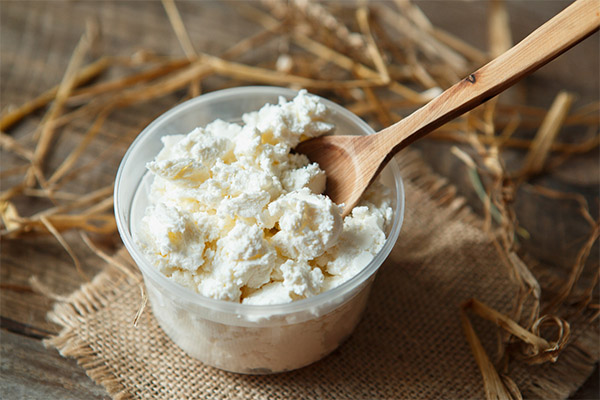
By the presence of amino acids and protein, goat cottage cheese is close to meat, but it has a lower calorie content. The main useful component of the goat's dairy product is calcium, which contributes to the normal growth and strengthening of the skeletal system. In addition, it contains minerals such as magnesium, phosphorus, and B vitamins. A goat product is especially useful in the treatment of osteoporosis. When choosing such cottage cheese, it is necessary to pay attention to the shade of the product - it should have a white color.
When using goat curd, you should know the measure, as it helps to increase blood cholesterol. If a person has diseases of the cardiovascular system, you need to choose less fatty foods.
Is cottage cheese made from milk powder
To understand whether a fermented milk product from milk powder is useful, you need to know what it is. Essentially, a dry product is a powder that is formed by drying pasteurized milk. This occurs at a temperature of 150-180 degrees. After that, the mass cools and then sifted. The peculiarity of such milk is that after mixing with water it becomes as if restored. Such a product has a longer shelf life. It also contains all the useful minerals, fats and proteins. This product is easy to digest.
Powdered milk curd becomes slightly oily. Thus, cottage cheese made from dried milk also has many useful substances, like a product from whole milk.
Fat-free cottage cheese: benefits and harms
Fat-free cottage cheese is considered to have a fat content of not more than 0.1 percent. Despite the lack of fat content, this product has a calorie content of 71 kcal per 100 g. Usually, such low-fat cottage cheese is used in the diet with strict diets to provide the body with useful vitamins and minerals.
However, low-fat cottage cheese is not as useful as it might seem. During heat treatment, most vitamins and minerals are lost.
It should also be noted that it is impossible to completely degrease such a product, therefore, it is not recommended to use it with active weight loss. In addition, such a dairy product is not recommended for use by pregnant women, it can harm the baby.
Is there any benefit from the curd mass
The benefit of the curd mass depends on the quality of the curd that was used to prepare it. In the manufacture of this product is not subjected to heat treatment, which allows you to save all the useful properties. In addition to protein, quickly absorbed by the body, the curd mass contains a large number of minerals, such as calcium, iron, magnesium, potassium, selenium, etc.
Curd mass has the same benefits as pure curd.If the product is high quality, it enriches the human body with B vitamins, which improves mood. This product also contains proteins and fats that improve bowel function.
The daily norm of cottage cheese is 200 g. If you constantly exceed this indicator, kidney diseases may occur, cholesterol levels will increase. When buying, you should pay attention to the packaging of the product, it should not be damaged, have a sticky and wet surface. If the curd is stored on the counter for more than three days, it is better to refuse such a purchase.
Is it possible to eat curd while losing weight
It is believed that when losing weight, you can only use skim milk product. When you include cottage cheese in the diet during the diet, it is important to adhere to some rules. It is recommended to eat this product in the morning, as it takes about three hours to digest it, while kefir or fermented baked milk are digested within an hour.
For dinner, you can eat no more than 2-3 tablespoons of cottage cheese. They can be added to a light salad of vegetables. This will protect the body from falling asleep and unpleasant sensations.
Cottage cheese in medicine
In addition to the fact that cottage cheese is a very tasty food product, it also has a number of useful properties. This lactic acid product contains many vitamins, trace elements, protein, which are undoubtedly necessary for the normal growth and development of each organism. Therefore, it is recommended to include it in the diet for various diseases.

With diabetes
If a patient with diabetes consumes low-fat cottage cheese, this helps to reduce its weight, normalize metabolism, and reduce sugar levels. Due to the high content of vitamins and minerals, the product helps to increase the patient's immunity.
In the patient’s diet, cottage cheese can be present only in its pure form, it is not recommended to use the curd mass. A diabetic patient should eat this product several times a day, while the portions should be small.
Important: the glycemic index of fat-free cottage cheese is 30 units.
With pancreatitis
Cottage cheese is indispensable for restoring the pancreas. Animal proteins and other beneficial substances in the composition of this product contribute to the restoration of the cells of the stomach and pancreas. In acute pancreatitis, small portions of cottage cheese are allowed to be included in the patient’s menu on the fifth day of treatment, but it is necessary to consult a doctor. Only fresh cottage cheese is recommended. You can eat no more than 300 g of the product several times a week.
With gastritis
In the acute form of gastritis, the use of cottage cheese is contraindicated. In the remission stage, low-fat cottage cheese is allowed, but it should not be raw. You can cook cheesecakes or cheesecake. If the doctor allows you to eat cottage cheese, it should still be crushed in a blender until a paste is obtained. This is done so that even the smallest grains of the product do not injure the mucous membrane of the patient’s stomach.
Gastritis with high acidity involves taking cottage cheese, which has undergone heat treatment, that is, in the form of cheesecakes, dumplings, etc.
With low acidity, the consumption of a small amount of fresh cottage cheese is allowed.
For the intestines
Sour-milk bacteria in the cottage cheese contribute to the restoration of intestinal microflora. Therefore, for the normal functioning of the digestive system, this product should be included in your diet. At the same time, this product is allowed to eat fresh, you can also add various components to it. Cottage cheese does not cause bloating and does not irritate the intestinal mucosa.
A well-composed diet with the inclusion of cottage cheese has a positive effect on the formation of feces, due to which there are no difficulties with bowel movement.
For constipation
To normalize stool and soften the accumulated feces, it is recommended to add a fatty sour-milk product to the food. For the desired effect, it is recommended to purchase products with a fat content of 2–9%.
Only fat-free cottage cheese can lead to constipation. This is due to the fact that the product has a dry consistency and is poorly digested, as a result of which the feces acquire a solid and dense structure.
With gout
With this disease, the use of cottage cheese is permissible, however, it is recommended to give preference to low-fat products. It is better to use it in the morning as the main food. Patients with gout are allowed to eat no more than 400 g of cottage cheese per day. The dairy product has a beneficial effect on metabolic processes, helping to eliminate uric acid and other substances that harm joints.
With colitis
In case of exacerbation of chronic colitis, rubbed cottage cheese is allowed in the patient's diet. At the stage of remission of colitis, it is also recommended to consume a sufficient amount of this treat. Colitis with constipation requires the inclusion of fatty cottage cheese in the diet, with the manifestation of colitis with diarrhea, a fresh product with less fat content is allowed.
For the liver
The cottage cheese contains amino acids involved in fat metabolism, which facilitates the liver. In addition, the components included in the product have antioxidant properties, which helps protect liver cells from destruction. It is not recommended to abuse fatty cottage cheese. The product must be fresh and have a fat content of not more than 5%.
With hemorrhoids
To alleviate the symptoms of hemorrhoids, it is important to follow a diet. Cottage cheese refers to the permitted products for this disease. It provides benefits due to the trace elements that make up its composition. Cottage cheese contributes to the normalization of intestinal microflora. This will soften the stool. However, during an exacerbation of the disease, a dairy product can be eaten after three days.
With cholecystitis
Patients with cholecystitis may include low fat cottage cheese in their diet. After exacerbation, the patient is allowed to use low-fat cottage cheese. This dairy product is rich in lipotropics, which is very important for cholecystitis. During an exacerbation of a chronic disease, fasting is prescribed to the patient.
Recipes of traditional medicine based on cottage cheese
Cottage cheese has a large number of vitamins and minerals useful for the body. However, this product is able to be useful not only for internal use, it can also be used externally. There are many recipes based on cottage cheese. For example, traditional healers use it in the treatment of bronchitis and the prevention of pneumonia. You can use this recipe only if antibiotics are not used for treatment. To do this, you need to take cottage cheese of any fat content and mix it with a small amount of honey. So, for 100 g of curd product, you need a tablespoon of honey. Cottage cheese should be warm. The resulting mass should be applied in a small layer on the chest, covered with wax paper, a towel and a warm scarf. Such a compress must be kept all night. Before going to bed, you should drink herbal tea for coughing. In the morning, the compress is removed.
With the help of cottage cheese boils are treated. To do this, it is necessary to heat the cottage cheese to a temperature of 40 degrees and overlay the affected area several times. This procedure prevents the inflammatory process, and the boil passes in a short time.
Cottage cheese in cosmetology
Cottage cheese is a product of milk processing, which has many beneficial properties for the body. To maintain the natural beauty of the hair and face, you can prepare various masks based on this product. Curd gently cleanses the skin, evens out its tone and has a moisturizing effect.
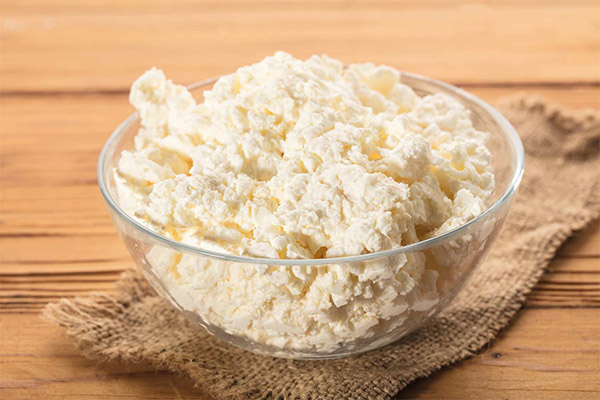
For face
To cleanse the skin of the face and enrich it with nutrients, you can use a raw curd mask. To do this, you need to take a couple of spoons of fresh dairy product and rub it into the skin. This will clear it of dead cells. Such a mask also helps get rid of acne.
As you know, lemon has a whitening effect. You can take 4 tablespoons of fresh cottage cheese and one tablespoon of honey and lemon juice. All components should be mixed and applied to the face. The mask should dry. After that, it must be washed off with water. After the first application, the skin becomes smooth. With repeated applications, the tone of the face improves.
For hair
Cottage cheese can be used for making hair masks at home. For example, to give the hair shine and volume, it is enough to take cottage cheese and fruit puree in equal quantities, mix them and apply to the hair. The mask should be kept for half an hour. After this, the hair must be washed with shampoo. As a fruit for dry and normal hair, you can use peach, banana, apricot. For oily hair, apple, kiwi is suitable.
To prepare a mask for dandruff, you will need 100 g of fat cottage cheese and a small amount of black pepper. To make the effect better, a little tar soap can be added to the mixture. The mask is applied to the hair for 20 minutes, then washed off with warm water and shampoo. This procedure must be carried out twice a week.
Harm and contraindications
Despite its many useful characteristics, cottage cheese is able to harm the human body. First of all, it is necessary to take into account the freshness of the product. It must be remembered that the lactic acid product is perishable, in it E. coli begins to multiply the fastest. When buying, it is important to check the date of manufacture. Such a product is stored for no more than three days. Otherwise, you can get food poisoning.
Curd product is contraindicated in case of individual intolerance. Also, you should not eat cottage cheese for those who have kidney problems. This is due to the fact that the high protein content in this product significantly loads the organs of the excretory system.
Do not get involved in cottage cheese and with diseases such as atherosclerosis, obesity.
How to choose and store cottage cheese
- When choosing, you need to pay attention to products in transparent packaging - so you can see what's inside. The packaging must not be damaged. You should also pay attention to the date of manufacture.
- If there is a swollen lid or packaging, it is better to refuse the purchase. The yellow color of the product indicates its corruption. Quality cottage cheese should not be liquid.
- The color should be uniform, if this is not observed - it means that in the manufacture of products of different quality were mixed or fresh cottage cheese with spoiled.
- As part of a quality product, ingredients with unfamiliar names should not be found.
If cottage cheese is purchased in a plastic bag, it should not be stored in it, since the product will quickly deteriorate. It is better to store it in an enameled container with a lid, and the use of containers is possible. In the refrigerator, you should choose the coolest place, the optimum temperature is + 2- + 6 degrees.
The fermented milk product retains its useful qualities for three days, after this time it is recommended to heat the cottage cheese, bake a casserole with it.
Is it possible to freeze
Cottage cheese can be frozen. It is stored in the freezer for several months. After defrosting, the dairy product retains its taste characteristics, but by consistency it can become like a curd mass. It is necessary to freeze cottage cheese no later than four days after manufacture.It is recommended to carry out freezing in small portions, since it will no longer be possible to re-freeze.
Products that have been prepared using this component, such as cheesecakes, can also be frozen.
How to check cottage cheese for naturalness
Good cottage cheese has a granular structure, has a milky white color. This suggests that natural milk was used for its manufacture. If you wipe the curd product between your fingers, a good product will change its consistency and greasy marks will remain on the fingers.
High-quality cottage cheese should be slightly crumbly, if it has a homogeneous consistency - palm oil was used in its manufacture. The natural product should smell like milk.
The taste of natural cottage cheese is neither sour nor sweet; the product has only a slightly sour taste. Taste qualities depend on the percentage of fat content, that is, the lower the fat content, the less pronounced the taste of cottage cheese.
To keep the lactic acid product longer, some manufacturers add palm oil and other components to it. To check the naturalness of the selected product, you can use several methods. You can take a piece of cottage cheese in your mouth and hold it for several seconds on the tongue, if the product is natural, there will be no feeling of a greasy film.
You can also put a teaspoon of cottage cheese in a glass of water and stir. If a yellow film appears, this means that the product contains vegetable oils.
How to make cottage cheese at home
To treat yourself to the benefit of the body, you can cook the cottage cheese with your own hands at home. There are many simple recipes from different ingredients.
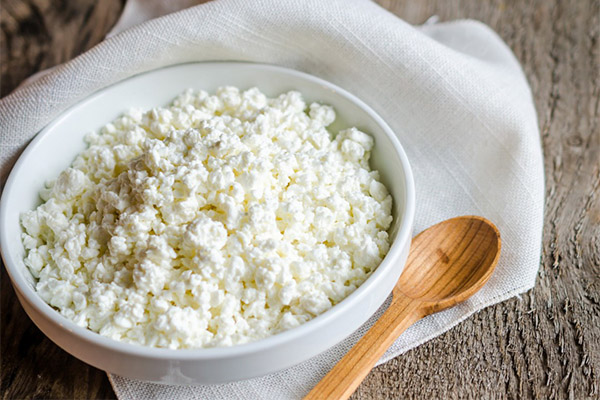
From milk
First you need to pour a few liters of milk into a saucepan, cover and leave for a day in a warm place. So it will turn sour. You can add a little sour cream, then the cottage cheese will get a slightly sour taste. When the milk turns sour, the pan with it should be placed in a water bath on a slow fire. When the mixture boils and a yellowish liquid begins to form, you need to turn off the heat and let the mass cool.
Next, you need to take a sieve, cover its bottom with two layers of gauze. The cooled mixture should be gradually poured into a sieve, after which the edges of the gauze should be raised and tied so that it can be suspended. After half an hour, all the whey drains, and what remains inside the gauze is homemade cottage cheese.
From kefir
For cooking homemade cottage cheese, you can use not only milk. For this purpose, kefir is also suitable. Moreover, instead of the usual heating, the freezing method is used. To do this, just put a package of kefir in the freezer in the evening. By morning, the product will completely freeze.
After this, it is necessary to carefully open the bag and put the frozen piece on a sieve for defrosting. The bottom of the sieve should be covered with gauze in two layers. After 9-10 hours, the whey should drain, and on the cheesecloth there will be tender cottage cheese, which will have a pasty structure.
How to make goat curd
To prepare a fermented milk product from goat milk, it is enough to prepare a liter of fresh milk and two pinches of salt. First you need to pour the milk into the pan, salt and bring the mass to a boil. After this, the dishes should be removed from the stove, cover and leave for a day at room temperature. Next, fermented milk must be placed in an enameled bowl and heated over low heat. Boil is not required, just warm it up, otherwise the product will get an unpleasant taste. Then put a colander in a deep bowl and cover its bottom with gauze in several layers.Pour the warmed milk onto cheesecloth and wait until all the whey has drained. It remains only to raise the edges of the gauze, hang it on something and wait until all the remaining liquid has drained.
Why cottage cheese is bitter
If the cottage cheese is fresh, but still bitter, there may be several reasons for this. First of all, this may be due to the pregnancy of the cow, whose milk was used in the manufacture of the product. Also, bitterness can appear due to the ingress of bitter grass into the animal feed.
Cottage cheese may be bitter if stored improperly, at the end of the shelf life of the product. If the cottage cheese was improperly prepared or the doses of pepsin were exceeded, a bitter aftertaste may also appear.
Cottage cheese with a bitter taste can be consumed, but it is still not recommended to introduce it into the diet of children. It is necessary to use such a product as early as possible without storing it for a long time.
Why cottage cheese turns rubber
Due to overheating of sour milk, cottage cheese can turn out to be rubber. As you know, it is formed as a result of coagulation of milk protein. When sour milk is heated, coagulation occurs very quickly, and therefore stiffness occurs. It must be remembered that the less sour milk is heated, the more tender is the finished product.
Rubber cottage cheese can turn out due to poor-quality milk. Perhaps the animal developed mastitis or introduced a new feed into the diet.
The reason can also be used starter cultures. It is recommended to use sour cream and serum, which is obtained by self-souring.
Why cottage cheese turns liquid
The curd becomes liquid in the event that the mass is not cooked, although it is very easy to digest it (then the product will turn out tough). The mixture used for making cottage cheese should be hot, no more.
It is also important to suspend cheesecloth with cottage cheese so that all the whey flows out.
What can be cooked from cottage cheese: recipes
Today, around the world there are many different recipes based on cottage cheese. Recipes of dishes may differ by local features, manufacturing methods.
Syrniki
Cheesecakes are a dish that everyone has surely tried. They are very useful, nutritious, cooking them is not difficult. This will require 0.5 kg of cottage cheese with medium fat content, three tablespoons of sugar and flour, a couple of fresh eggs, vegetable oil, a little raisins. First you need to rinse and steam the raisins. Then mix the cottage cheese with sugar and add the eggs and flour to the mixture. Next, knead the dough, add raisins and mix again.
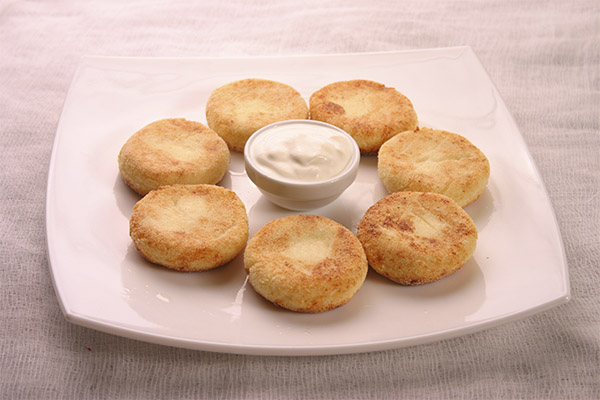
On the board you need to put prepared cakes, roll them in flour, and leave for 5-10 minutes. After that, you need to pour a sufficient amount of sunflower oil into the pan and fry the cakes on both sides over low heat. Ready cheesecakes can be served hot, adding sour cream to them.
Cottage cheese casserole
You can cook cottage cheese casserole, which is also useful, easy to prepare. So, you need 300 g of cottage cheese, 4 tbsp each. semolina and sugar, 0.5 cups sour cream with a fat content of 15%, a couple of eggs, raisins, a bag of baking powder, a pinch of salt, vanillin and a little vegetable oil.
First you need to rinse and steam the raisins. Then you need to mix semolina with sour cream and let the mass stand for 20 minutes. After that, mix the cottage cheese and semolina with sour cream in a bowl, add vanillin, baking powder, salt and mix everything thoroughly. You can use a blender. As a result, a pasty mixture without lumps should form. Next, add pre-beaten eggs with sugar and mix everything. Then introduce raisins. The dough is ready. It remains only to grease the mold with oil, sprinkle with semolina, pour the dough into the mold and send to the oven for 40–45 minutes.The finished casserole is served warm with the addition of sour cream.
How to eat cottage cheese
It is recommended to use cottage cheese in the morning, for example, for breakfast. So the product will provide the body with energy, essential vitamins and minerals for the whole day. You can add cottage cheese to the lunch menu, but for this you will need to choose dishes that will be combined with this product. As you know, it is recommended to use soups for lunch, often with the addition of meat, which suggests that it is better to refuse cottage cheese for lunch.
How much can you eat per day
You can use cottage cheese from 100 to 300 g per day. For the female half, the norm is 200 g of the product, men are allowed to eat 300 g per day. Overeating is not recommended, otherwise it will negatively affect the state of health.
Is it possible to eat cottage cheese every day
If you eat cottage cheese in unlimited quantities, it can harm your health. Indeed, this fermented milk product contains substances, the excess of which leads to disruption of the digestive system, the occurrence of heart diseases, the development of obesity and atherosclerosis. Therefore, taking into account the norms for men and women, it is not recommended to consume cottage cheese more than 2-3 times a week.
Is it possible to eat cottage cheese with sour cream
If you add sour cream to the curd, you will get a very useful dish for the digestive tract. This dessert does not irritate the gastric mucosa. When sour cream is added, muscle growth is accelerated. It is only important to choose the right fat content of both components. Such a dish stores the body with energy, increases stamina. You can add ingredients such as raisins, prunes, honey, nuts, etc. to this dessert.
If you add parsley with dill and garlic to the curd with sour cream, then the quality of the sexual life will improve. Indeed, in herbs and garlic contains a lot of zinc, which is involved in the production of such a hormone as testosterone. With a lack of zinc in the body, erectile dysfunction develops, muscle mass decreases.
Is it possible to eat expired cottage cheese
Cottage cheese refers to perishable foods. If it is not stored properly, pathogenic bacteria begin to multiply in it, which, if ingested, can lead to botulism. Very high risk of poisoning. If more than 3-4 days have passed since the date of manufacture of the product, it is better to refuse to eat it, in extreme cases, use it for baking.
Is it possible to eat cottage cheese after training
Cottage cheese after training is not only possible, but also needs to be consumed. This is a harmless product that will replenish the energy spent during training, provide muscles with protein nutrition. It is recommended to eat it fresh. Curd cheese should not be used, as they contain a lot of sugar and harmful additives, which will harm not only the muscles, but also the health in general. During heat treatment, part of the useful properties of cottage cheese is lost, therefore, in order to obtain a better effect, it should be present in the diet after a fresh workout.
Can I eat at night and on an empty stomach
All foods, regardless of calorie level, should not be consumed before bedtime. The last meal should be at least three hours before bedtime. But if you still really want to eat, you can choose low-fat cottage cheese, which is not so high-calorie. It will cause the least harm to the body and quickly digested. It is recommended to eat cottage cheese until 17 hours, no later.
As for fasting, it is better to abandon such a habit. This is due to the fact that in this case, the product is able to do more harm than benefit the body.
Is it possible to eat cottage cheese in the post
The main requirement of all posts is to abstain from food of animal origin. These include eggs, milk, meat, fish and all dishes using these products. Since the main ingredient of cottage cheese is milk, it should not be eaten during fasting.
However, there are some exceptions.Restriction of cottage cheese during the fasting period does not apply to those who need a product. This primarily concerns pregnant and lactating women. Calcium present in the curd and many other useful elements are very important for the normal development of the fetus, as well as for the growth of the skeleton of the child in the first year of life. Also, cottage cheese can be taken by patients who have problems with bone strength. They need a constant intake of calcium in the body.
Is it possible to give animals cottage cheese
For animals, cottage cheese is just as necessary as for humans. Pets need calcium to strengthen bones, protein is important for animal activity. The amino acids contained in the curd contribute to the normalization of the digestive tract and the nervous system of domestic animals. Cottage cheese is especially important for small puppies, kittens who need strong immunity, a strong musculoskeletal system.

However, it is not recommended to give animals fat cottage cheese in unlimited quantities, otherwise it will harm the body of a beloved pet.
Interesting facts about cottage cheese
- Earlier in India, at the festival of the god Krishna, it was necessary to break the vessel with cottage cheese. People believed that such a procedure would bring good luck for a whole year.
- In Russia, industrial cottage cheese appeared only at the end of the 19th century. Before that, only homemade cheese was present in the diet of people.
- Calcium and vitamin D in cottage cheese reduce the risk of developing breast cancer. This became known during research at Harvard, which took 16 years.
- In ancient times, people used cottage cheese not only fresh, but also pressed it, harvesting it for the winter. This allowed you to save all the useful components of the product. As a result of pressing, the fermented milk product became hard as plastic, so the idea came up to use it to create buttons.
«Important: all information on the site is provided exclusively in fact-finding purposes. Before applying any recommendations, consult with a profile specialist. Neither the editors nor the authors are liable for any possible harm caused materials. "

